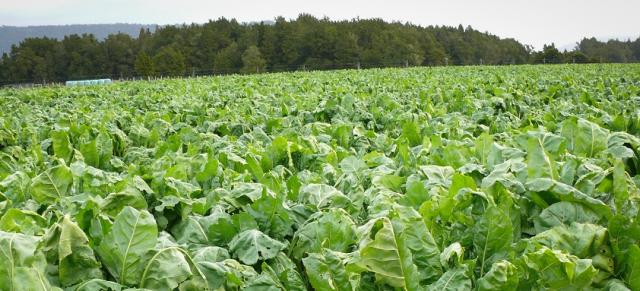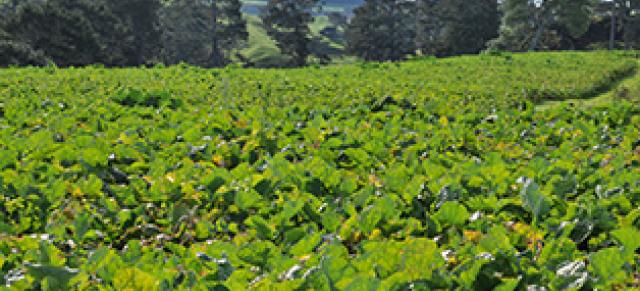Catch-crops increase the efficiency of the operation by retaining nitrogen in the root zone that farmers would otherwise have waved goodbye to.

Planting a catch crop is a way of reducing the risk of nitrate leaching after winter grazing, where there can be large amounts of residual soil nitrogen that is at risk of leaching. By planting another crop as soon as possible after your final grazing, you can capture those nutrients in the second crop and increase overall feed production from the paddock. This also protects the environment by reducing the risk of nitrogen loss to water. Research has shown that a catch crop can reduce nitrogen leaching by up to 40% in some soil types.
1. What soil type are you dealing with?
Free draining soils – with a low water holding capacity and a small pore volume (e.g. stony soils) or soils with subsoil drainage (tile, mole, nova flow) – are most at risk of nitrogen loss through leaching, and are also the most suitable for catch crops.
If you are dealing with heavy, wet, or water-logged soils the use of heavy machinery may damage soils. It is important, in this situation, to consider when and how you establish your catch crop. The soil may not dry out quick enough to allow you to work it up in time to establish a catch crop so look into other ways to established catch crops.
Consider the paddock topography and cropping history when looking at establishing a catch crop.
2. Is your soil dry enough to sow a crop?
Look at your paddock and consider the soil moisture before cultivating. Do not cultivate or disturb wet or water-logged soils before they have dried out. Consider no till sowing methods, such as direct drilling, Heli cropping or broadcasting. Try to get your catch crop sown as soon as the soil is dry enough. Catch crops are a good way to retain and utilise the nitrogen that remains in the soil after grazing a crop that could otherwise be leached during winter drainage events.

3. Choosing the right crop for your paddock.
Consider all your options and limitations:
- Will this crop germinate and grow at low temperatures?
- A cereal crop such as winter oats or Rye corn may be used as an effective catch crop.
- Will you either feed the crop directly to animals or will it be harvested and conserved for a time when feed is in short supply?
- Carefully consider using catch crops in dryland situations as they will remove moisture from the soil through transpiration and may reduce the available moisture for subsequent crops.
Relevant resources
The following resources are relevant to all livestock farmers – dairy, beef, sheep and deer – who graze pasture or crops intensively over winter. If you would prefer face to face guidance on these or other environmental issues, you can attend one of B+LNZ's Forage Cropping or Farm Plan workshops. View the B+LNZ Events Calendar for upcoming dates.
- Catch Crops Guidelines (DairyNZ website)
- Winter Forage Crops: management after grazing (PDF, 3.5 MB)
- Pugging and soil compaction – what influences pugging? (PDF, 1.7MB)
- Catch Crops: A Way to Reduce N Leaching after Winter Crops, Dr. Brendon Malcolm, Plant & Food Research (Podcast)
- Two wins from using a Catch Crop (DairyNZ website)
- Catch Crops (Plant & Food Research)
- Catch Crops (DairyNZ website)
- Forages for reduced nitrate leaching programme (DairyNZ website)
- Guidelines for Catch Crops (DairyNZ website)


